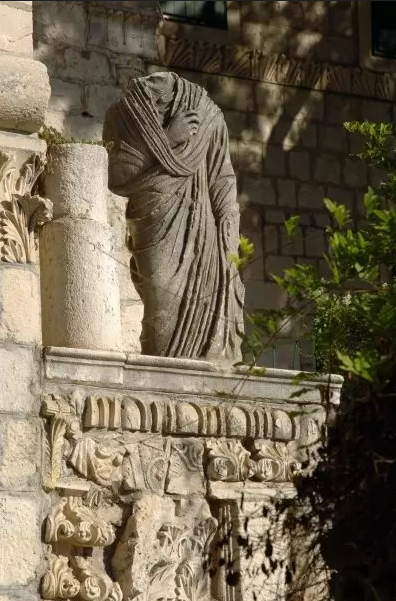If you can choose your holiday destination, choose Croatia! Not just because of the perfect weather, fine foods, delicious wine ans bright blue sea, but because during a holiday you can expolre the magnificent heritage of the Roman Dalmatia Provincia! My suggestion is the city of Salona: totally Roman, a bit romantic, tasty barbarian and wild, as everything in that region. o let's expolre the Roman city Salona, the Queen of the Roman cities in the Barbaricum!
Salona was an ancient city and the capital of the Roman province of Dalmatia. Salona is located in the modern town of Solin, next to Split, in Croatia. She was founded in the 3rd century BC by Illyrian people. Became under Roman rule. In 119 BC Caecilius Metellus was celebrating here his victory over the Illyr tribes and he received the name 'Dalmaticus' as a honor. And the city was mostly destroyedby the attacks of the Avars and Barbarian tribes in the seventh century AD. She flourished under the reign of Emperor Diocletianus.
Although Salona is one of the largest archeological sites of the Roman Empire, it is not exactly what you are waiting for. The park is underutilized and is not preserved, as if the works had not yet been completed. Everything seems half-finished. The site is not well guarded, and thefts have been reported, therefore many treasures are missing. This feature makes it so romantic: not a well-cared archaeological park, rather a wildly romantic park, as you find yourself in the middle of an excavation, or more romantic ideas, as the Barbarians just left after their destruction.
Salona grew in the influence of the Greek cities in the 3rd century BC.As she is the largest archaeological park in Croatia and grew to over 60,000 inhabitants. It was the birthplace of Emperor Diocletian. In the first millennium BC the Greeks set up a marketplace. After the conquest by the Romans, Salona became the capital of the Roman province of Dalmatia because it sided with the future Roman Dictator Gaius Julius Caesar in the civil war against Pompeius and Marcus Licinius Crassus of the First Triumvirate. Martia Iulia Valeria Salona Felix (the full name of the ancient city) was founded probably after the Roman civil wars under Julius Caesar. The early Roman city encompassed the area around the Forum and Theatre, with an entrance, the Porta Caesarea, on the north-east side. The walls were fortified with towers during the reign of Augustus.The early trapezoidal shape of the city was transformed by the eastern and western expansion of the city. The city quickly Romanized: you can find here all the features that a Roman city needs for example walls, a forum, a theatre and an amphitheatre – the most conspicuous above-ground remains today, public baths and an aqueduct. Many inscriptions in both Latin and Greek have been found both inside the walls and in the cemeteries outside, since Romans forbade burials inside the city boundaries. Several fine marbles sarcophagi from those cemeteries are now in the Archaeological Museum of Split. All this archaeological evidence attests to the city's prosperity and integration into the Roman Empire.
Salona had a mint that was connected with the mint in Sirmium and silver mines in the Dinaric Alps through Via Argentaria. When the Roman Emperor Diocletian retired, he erected a monumental palace nearby. This massive structure, known as Diocletian's Palace, became the core of the modern city of Split.
And here is an online avaliable book to read more about this wonderful Roman city: https://archive.org/details/romancitiesinita00frotuoft/page/264/mode/2up?view=theater






Comments
Post a Comment